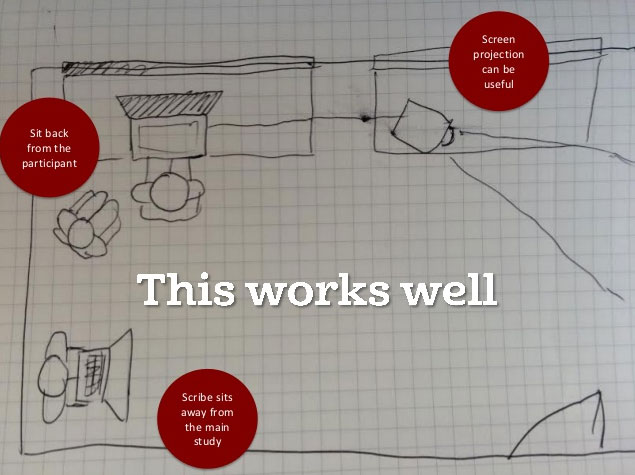NUX Leeds: Guerrilla Testing
In his presentation at NUX Leeds, April 2014 Chris Bush (@suthen) gave an introduction to the core concepts of guerrilla usability testing and provided tips for capturing notes that can save hours of analysis time.
- Use Guerilla testing when time and money is short or if the project is still at the prototyping stage
- Use reflective questions but don’t be a bastard, if the user is still struggling after five minutes help them out
- There are a million things you’re looking for and thinking about when moderating. If you’re scribbling notes you’re missing things and giving the user a poor experience, avoid this by using a scribe
- A second set of eyes also removes bias.
- Make your users comfortable and don’t crowd them, make sure you’re out of their direct eye line. Your note taker should be sat further away, ideally facing a different direction and looking at a projection of the screen

- Popapp.in is good for testing paper prototypes
- For mobile testing a £5 device mount coupled with AirServer will allow you record the session using your usual screen recording software
- Usability.gov has lots of check-lists and templates for consent forms and reporting findings
Key time savers
- Having a scribe allows electronic notes to be taken in real time
- Pear Note can automatically link audio, video and written notes
- Defining category’s or common observations and using a text expander can greatly speed up note taking. For example Breevy for the PC or aText for the Mac
- Marking sections of notes in real time for pulling out as video clips later can save hours of review
- Leave half an hour hour between sessions for aligning and processing your notes. This keeps the team fresh and greatly reduces the analysis time at the end of the day
- Review and analyse the notes on the day, making sure to agree on priority and severity ratings
- Mind mapping themes using software like XMind can be a quick way to create a visually deliverable from the raw data